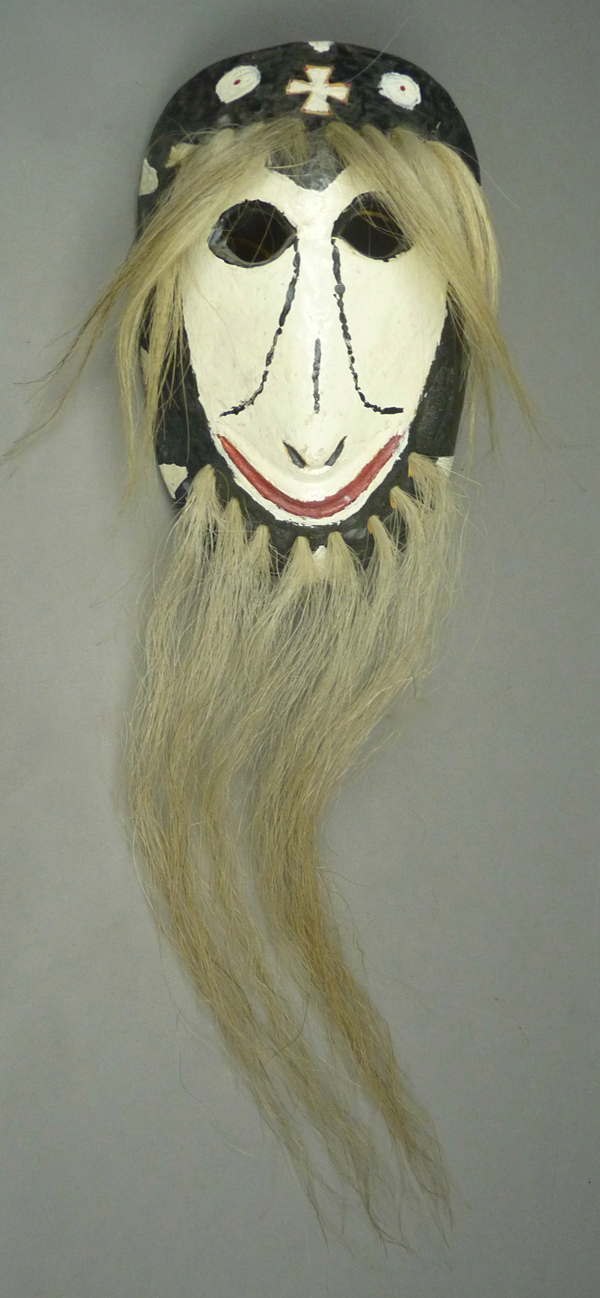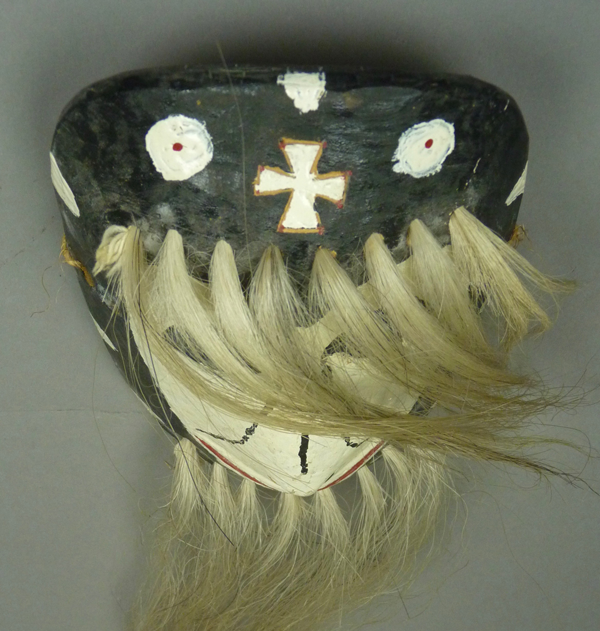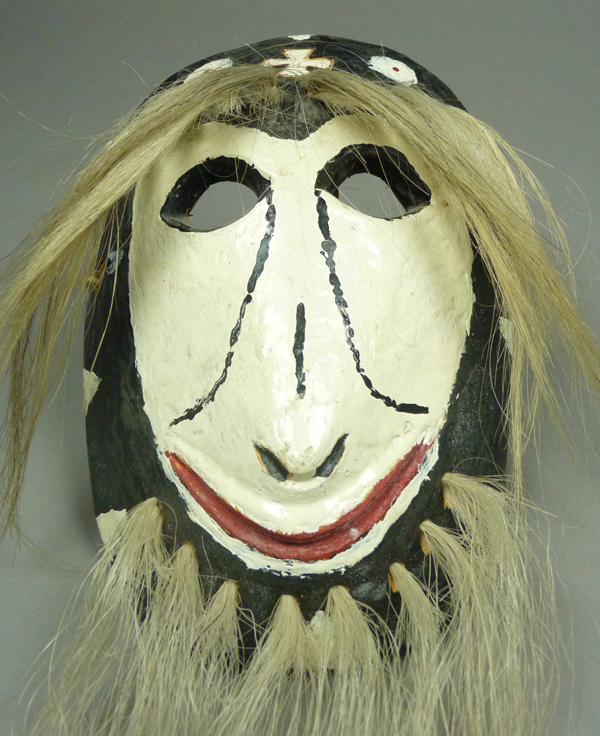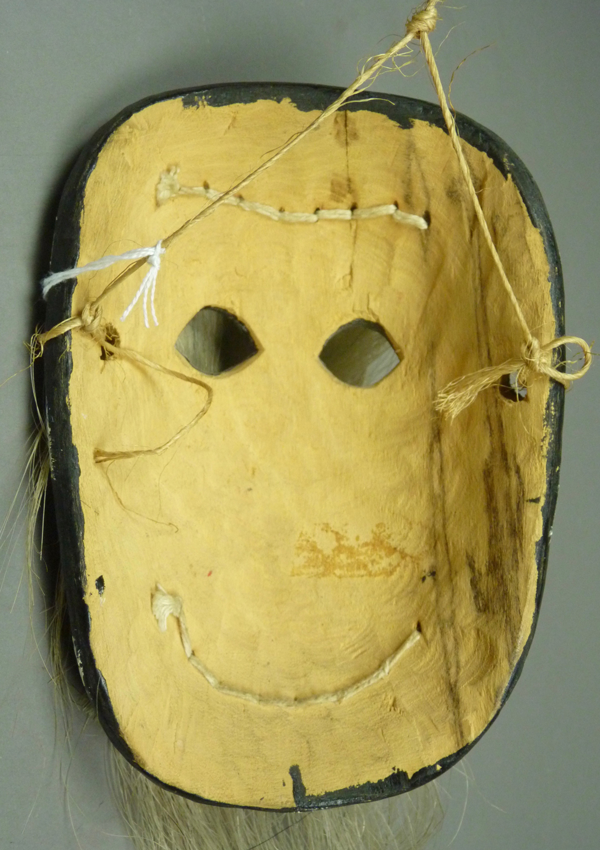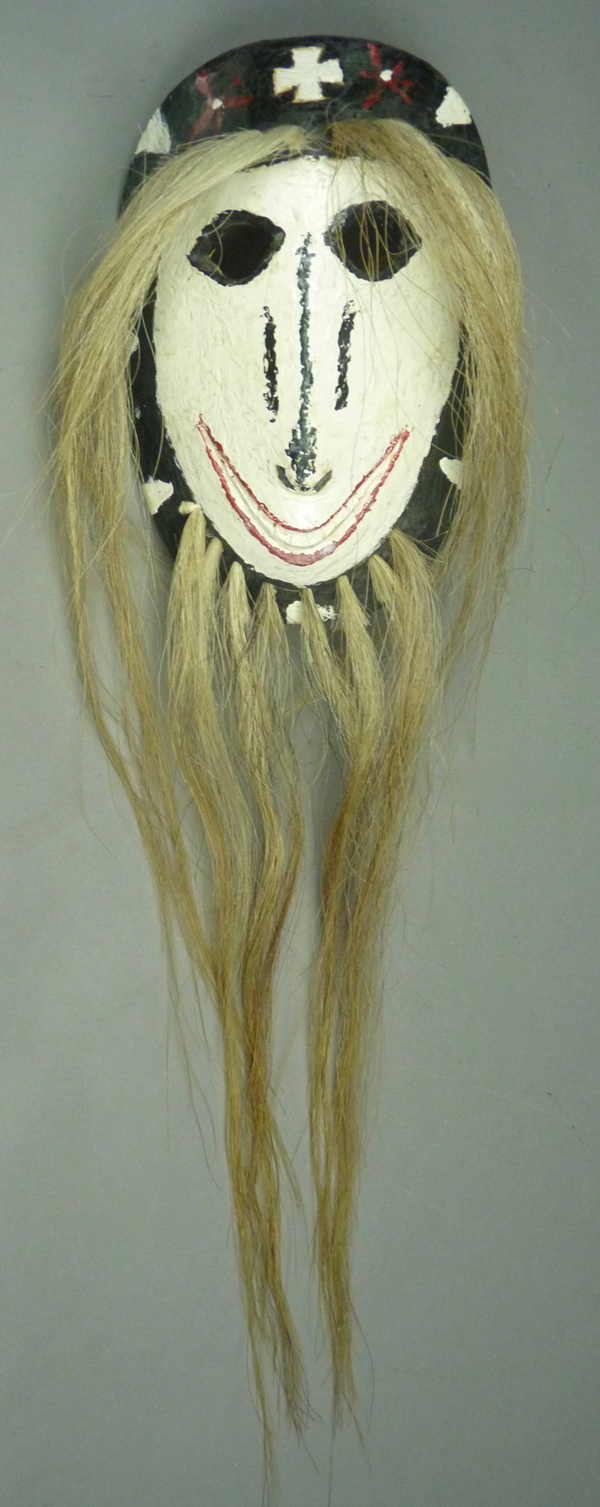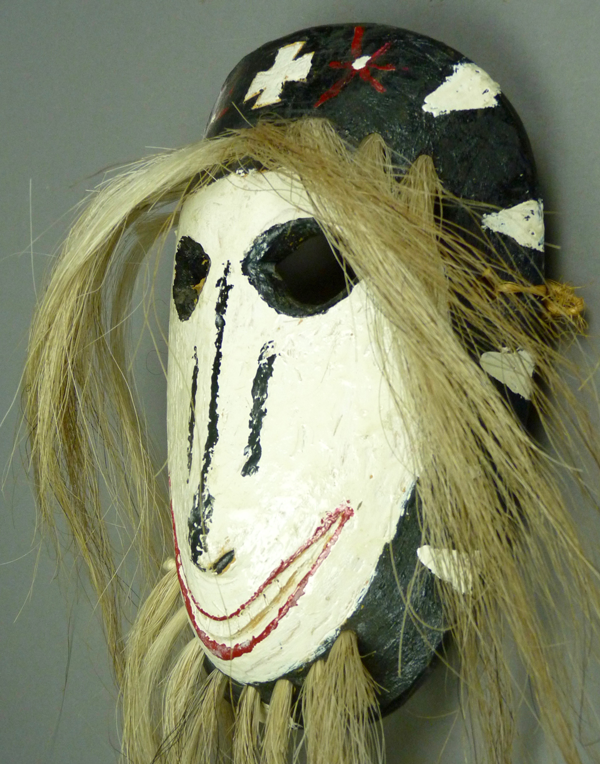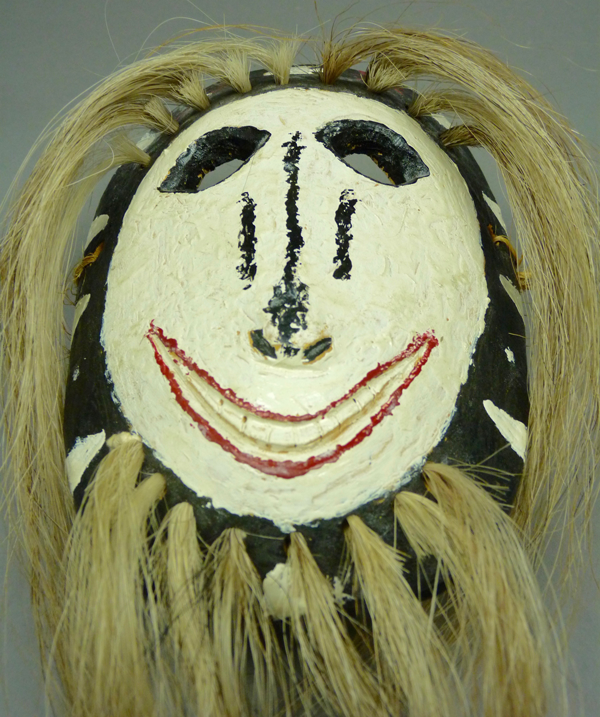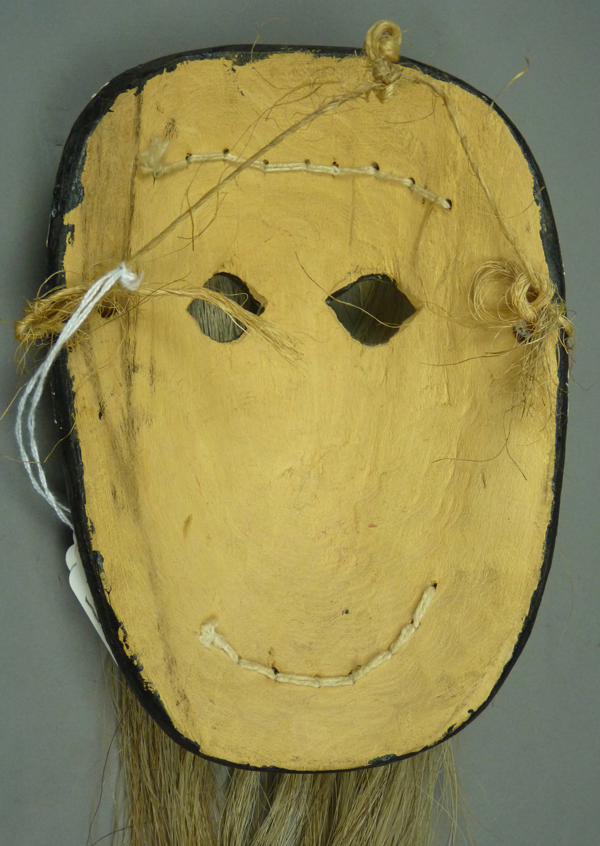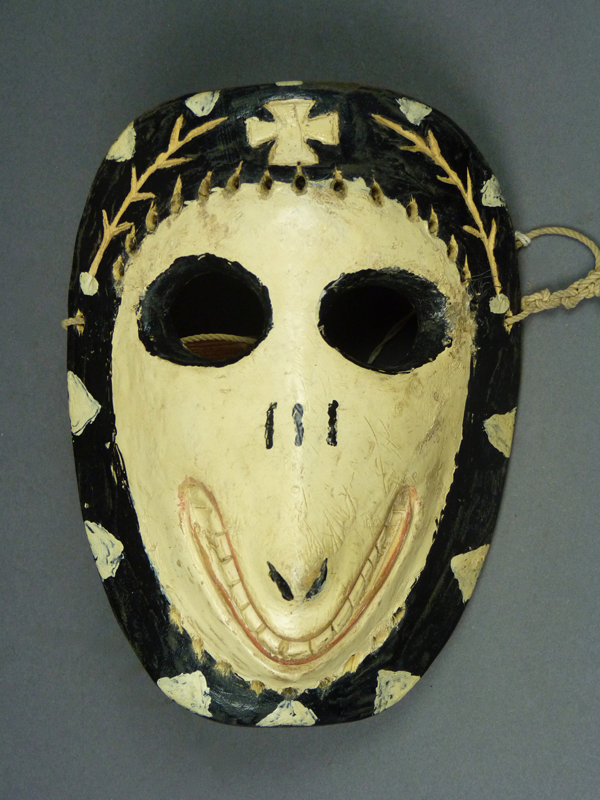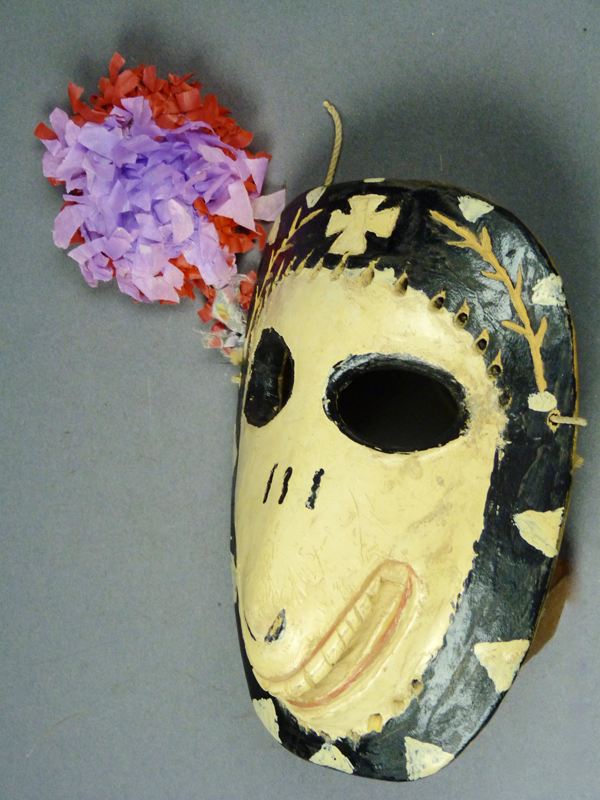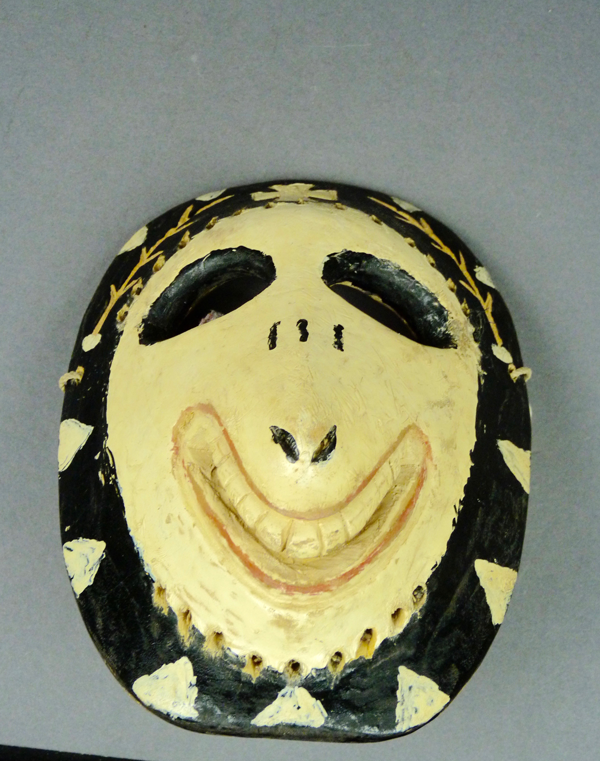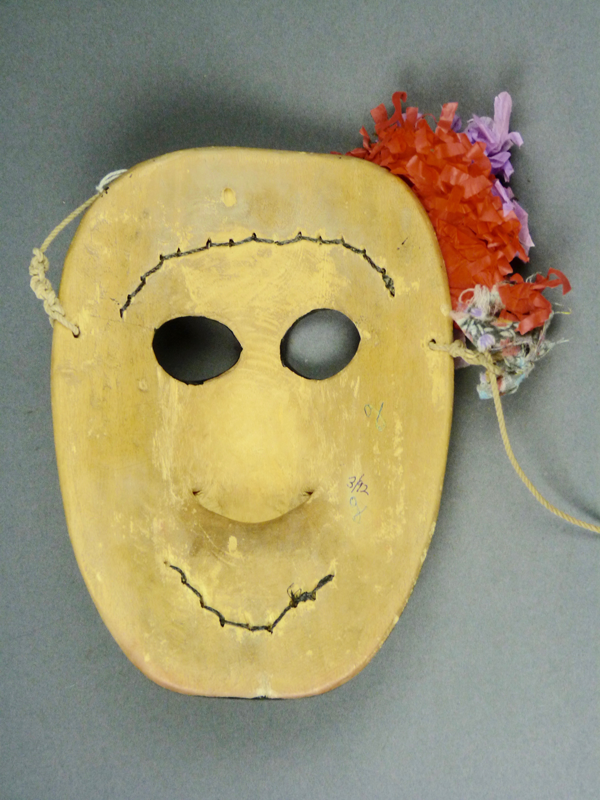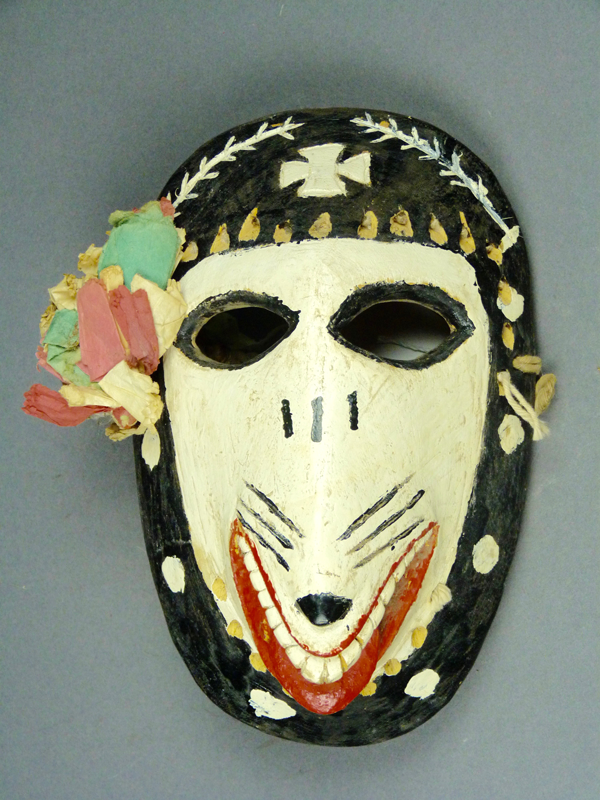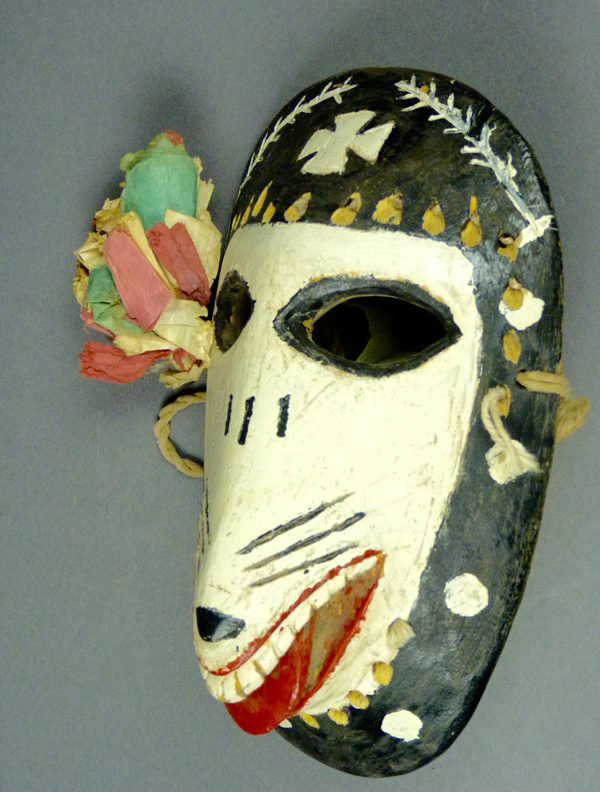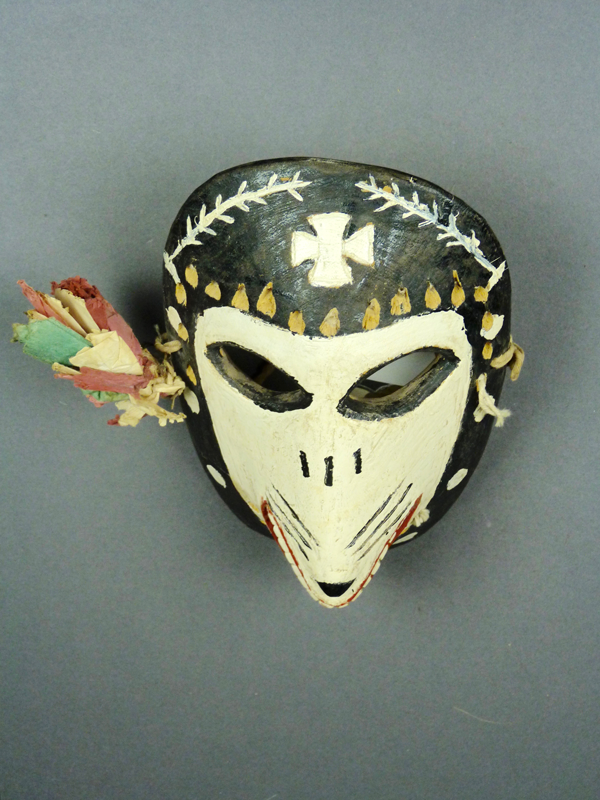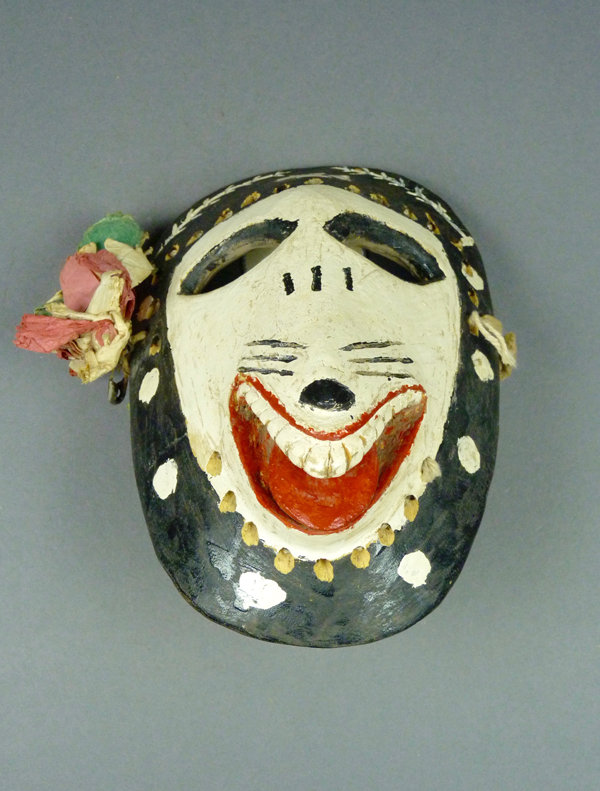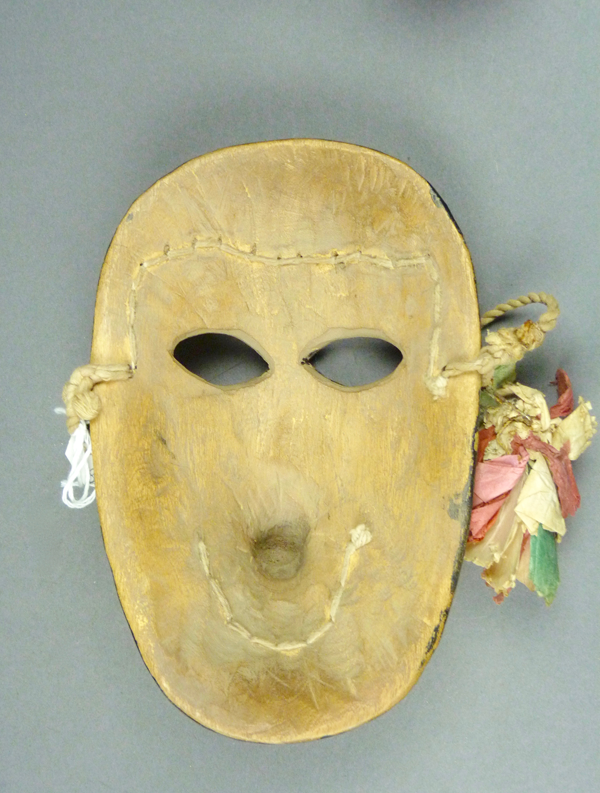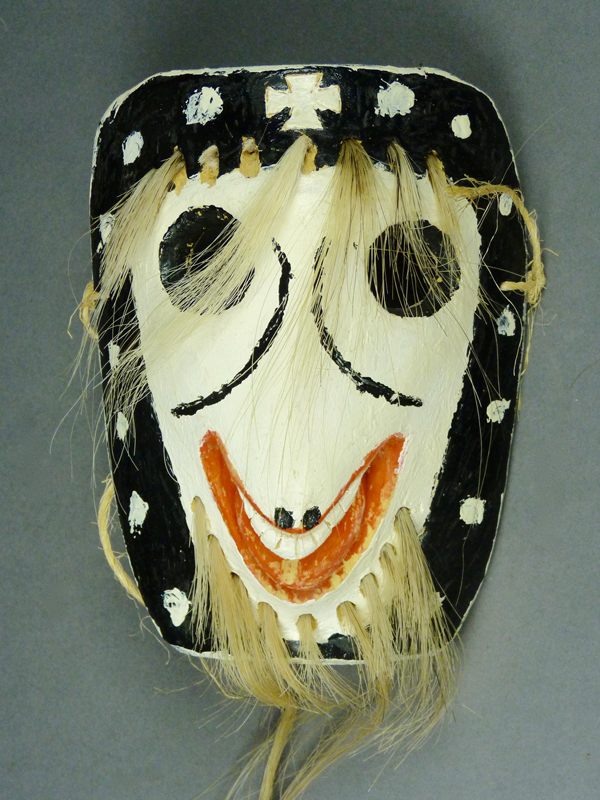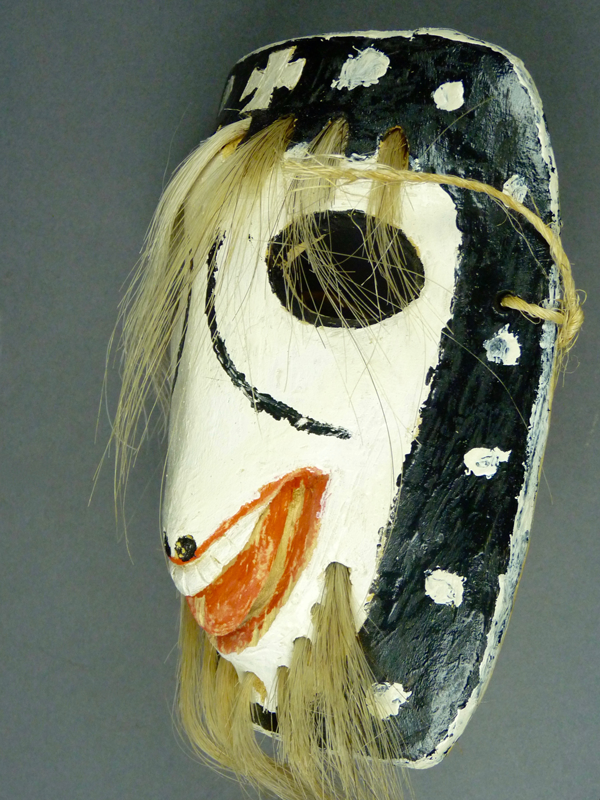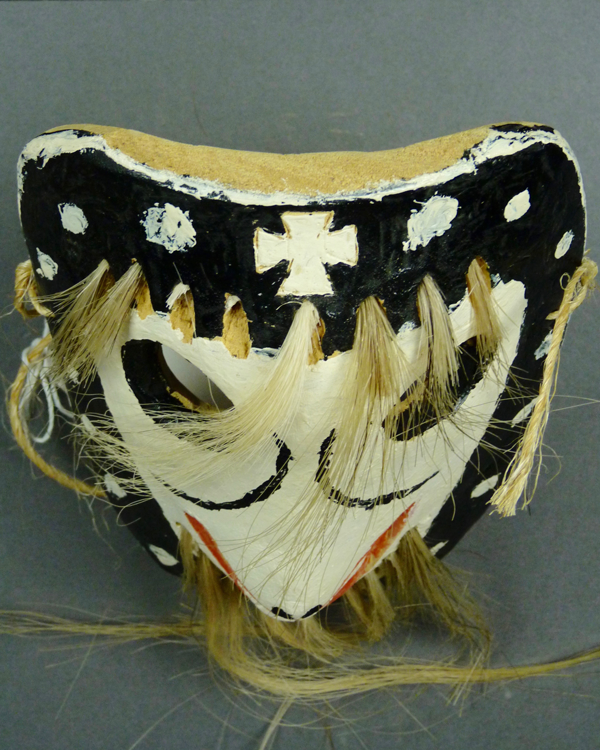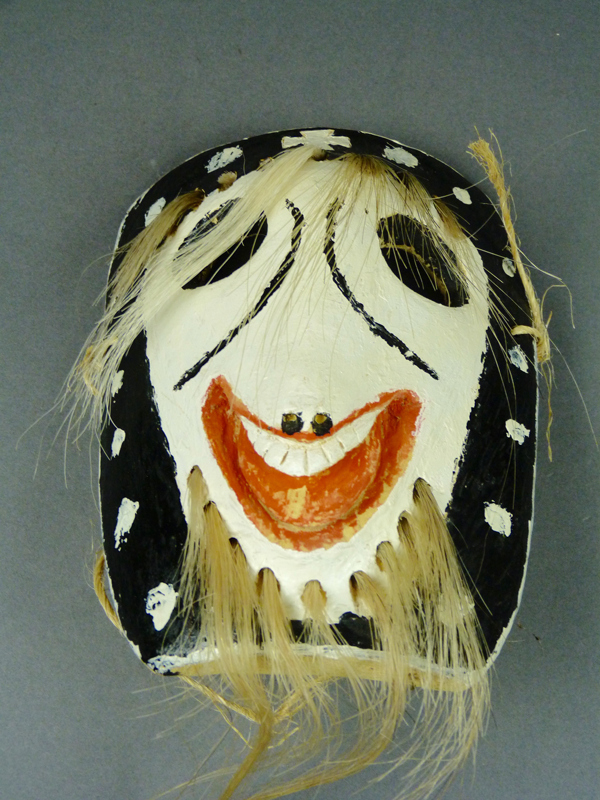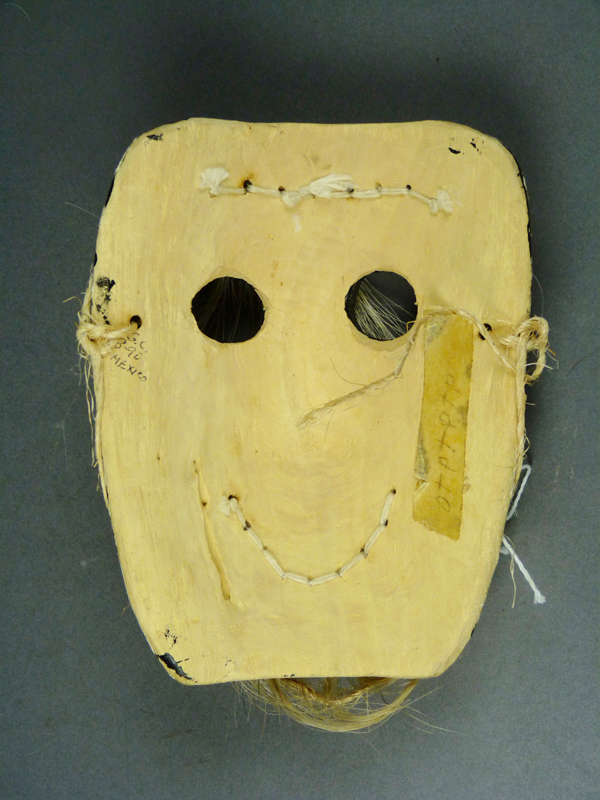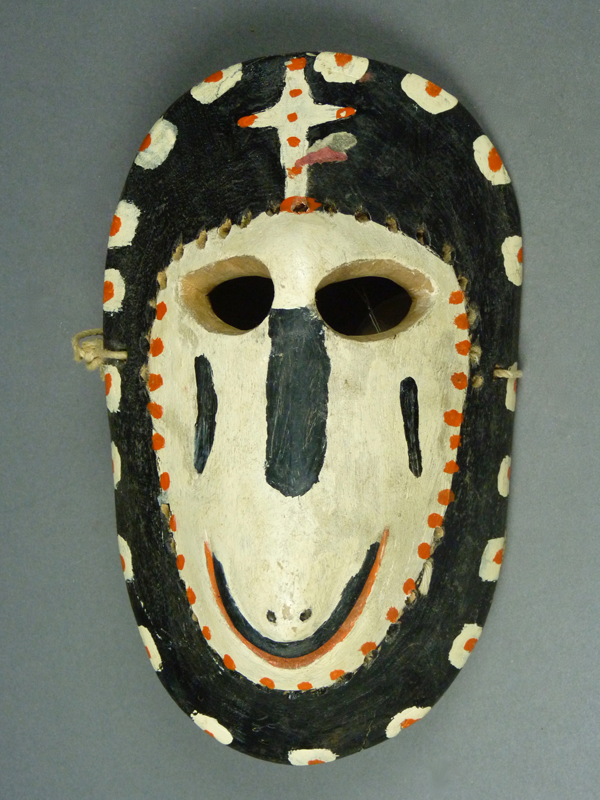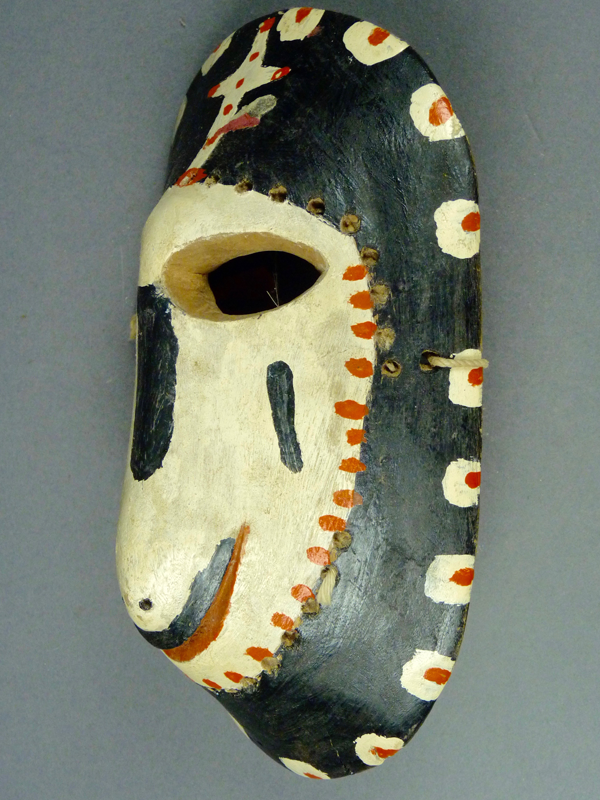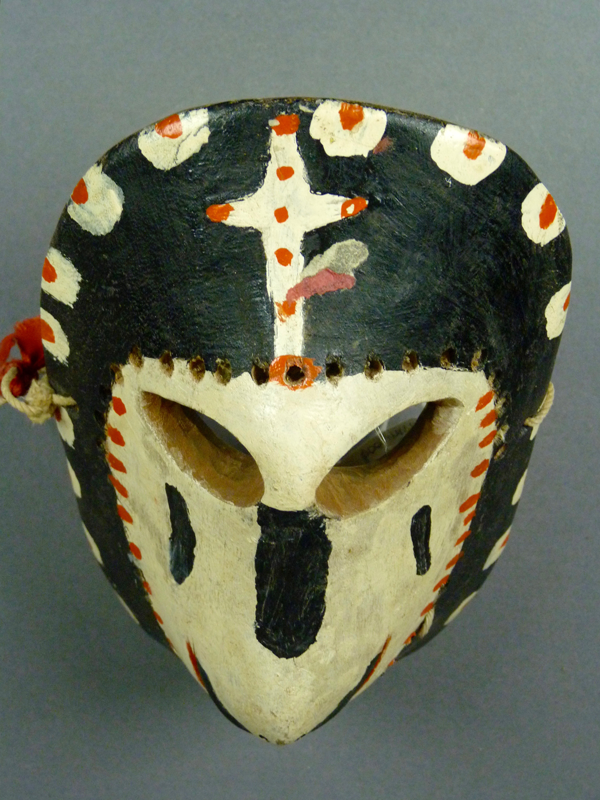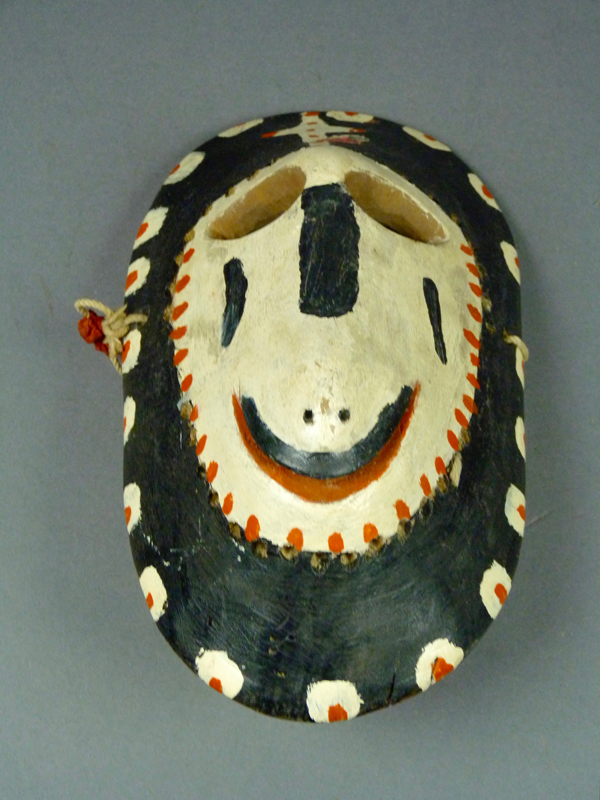Sometime in the 1990s, Tom Kolaz found a pair of Mayo Pascola masks in the Sinaloa style in a Tucson resale shop. These were not accompanied by any provenance. He passed them along to me, at a time when we both thought that they would remain forever anonymous. And for me, their owner, they did remain anonymous for about 20 years, until I photographed the collection of Barney Burns and Mahina Drees in 2016 and there found identical masks by a named carver. Most of those masks were said to have been carved by Guillermo Valenzuela, while one was attributed to his brother Andres Valenzuela. I consulted Tom Kolaz, who reported that he too had eventually collected some additional masks that were attributed to Guillermo. Some had actually been sold by Andres Valenzuela, who sometimes identified himself as the carver. It is Tom’s opinion that masks in this style should all be attributed to Guillermo Valenzuela.
Here is one of those that I bought from Tom Kolaz in the 1990s. Then, as now, Mayo Pascola masks from Sinaloa were uncommon, and seldom available to collectors, so I bought them whenever I could.
These are attractive despite their simple lines.
The forehead cross and the small triangles of the rim design are outlined with inscribed lines, but this is obscured by the thick paint.
The nostrils and mouth are carefully carved.
This mask is 8¾ inches tall, 6 inches wide, and 2 inches deep.
This mask may have been very lightly danced, or never danced. I am thinking the latter.
My second mask by Guillermo has a closed mouth with carved teeth.
Otherwise it is very like the first mask.
I suppose that the red designs flanking the forehead cross represent flowers.
This mask is 8½ inches tall, 5¾ inches wide, and 2 inches deep.
There is little staining to suggest use.
********************************************************************************
Here is a group of three masks by Guillermo Valenzuela from the collection of Barney Burns and Mahina Drees. The majority of this group had lost their hair to insects while in storage, making my pair a wonderful reference, since their hair remains intact and original. The first was collected circa 1992 after having been danced for six years. It is quite similar to my pair, but it has a much more attractive patina.
The crepe paper flowers in these photos were worn tied to the dancer’s topknot.
We see the the same forehead cross, with an incised border.
I like the twigs flanking the forehead cross.
The back is moderately stained from use.
The next was collected at an unrecorded date after having been danced for three years. It looks a lot like the last one.
The difference is that the mouth is open and the tongue extended.
This back is unusual for the deep recess at mouth level. There is obvious staining from use.
The next one was probably purchased in a store in Sinaloa in 1990, and appears to have never been danced. It was said to have been carved by “G. C.,” which Barney and Mahina recorded on the back at the time of purchase. It is obviously in the style of Guillermo.
The vision openings have an oval shape, which does make the mask look different from the last two.
The string (strap) looks like the ones on my two masks, bailing twine?
Another open mouth with tongue.
The back reveals no staining from use.
And finally here is one that was attributed to Andres Valenzuela when it mas collected by Barney and Mahina. This mask does not look like the other five, and I suppose that this one may really have been carved by Andres (or by someone else).
There is certainly good staining from use on the back of this mask.
Next week we will look at some attractive masks by Pedro Sanchez.
Bryan Stevens

